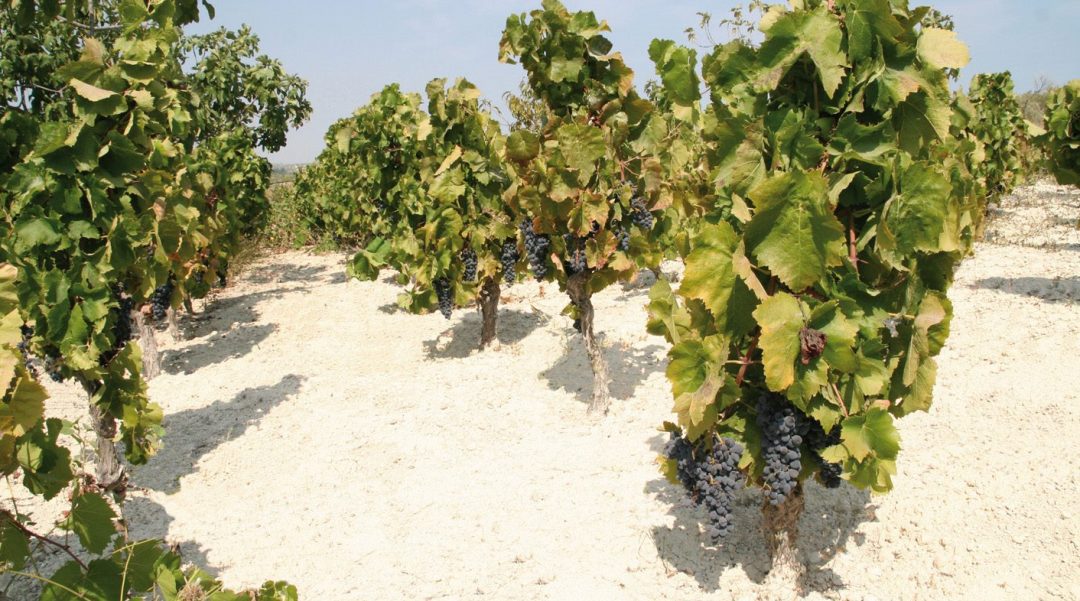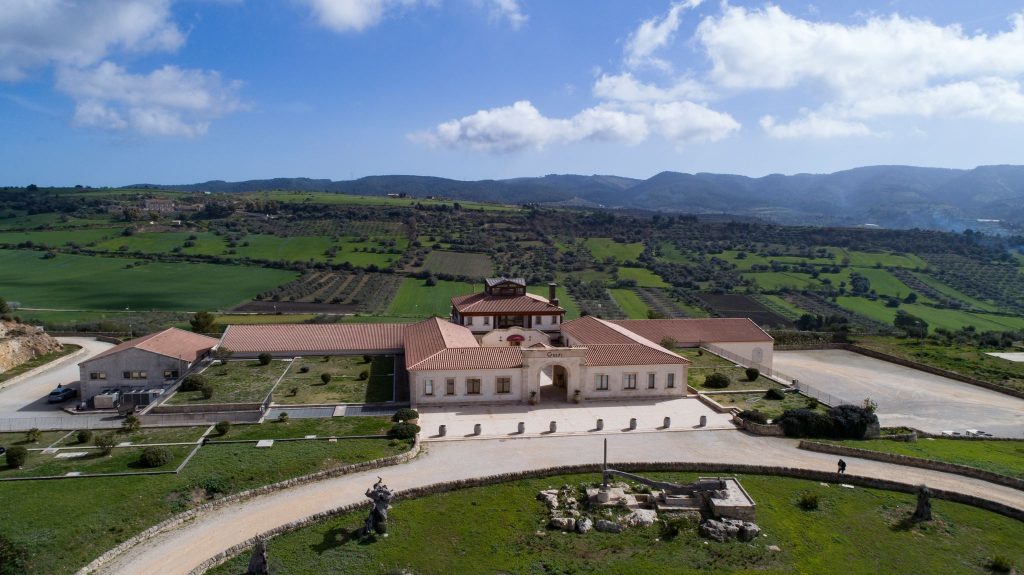I have long been an enthusiast of Gulfi Nero d’Avola wines. Despite the arid summer heat of their vineyards in Sicily’s southeast, Gulfi manages to coax freshness and finesse from the region’s powerful red grape. I recently had the occasion to taste the estate’s top wines, alongside their irresistible Cerasuolo Di Vittoria.
Matteo Catania is one of the most infectiously enthusiastic wine producers I have ever met. When he gets started extolling the terroir virtues of his native Chiaramonte Gulfi, or his prime vineyard parcels in Pachino Val di Noto, he can go on for hours. Thankfully, his story is a good one.
It starts with a vision for producing fine wines, of Bourgogne-like elegance, in an area best known for bold, brawny reds. It speaks of determination and a commitment to grow more sustainably – without recourse to irrigation, without chemical treatments, using holistic, biodynamic practices. To read more, check out my profile on Gulfi Wines covering their background and a tasting of their mid-range wines.
In May, I caught up with Matteo Catania once again, this time to taste his single vineyard bottlings from Pachino. The recently granted Pachino DOC lies in the Val di Noto on the southeastern tip of Sicily. According to Matteo, it is the country’s “grand cru” area for the Nero d’Avola grape.
The low lying vineyards of Pachino sit at just 30 metres above sea level between the Ionian and Mediterranean seas. The vines are buffeted by near constant cross winds which cools the temperature and keeps yields low, concentrating flavours.
Significant tectonic activity in the region, due to the meeting of the African and European continent’s tectonic plates in the area, has led to mass upheaval over time. This explains the wide diversity of soil types, predominantly volcanic, limestone, and clay-based.
Gulfi Nero Maccàrj 2017 – 92pts. LW
The Maccàri contrada (aka single vineyard) has chalky clay soils and a warm, south, southwestern orientation. The vines are mature, at over 35-years in age on average. The estate’s policy of dry farming and dense plantings of head-pruned bush-vines in the traditional Alberello style result in very low yields, of just 30 hectolitres/ hectare.
A dark, brooding Nero d’Avola with attractive aromas of cherry stone, black plum, and dried flowers overlying hints of wet earth and cedar. The palate is powerful and fleshy, with a concentrated core of orange peel, dark fruit, and savoury nuances. Finishes fresh, with chalky, ripe tannins. A big but balanced, vibrant red. Decant and serve slightly chilled.
Where to Buy: SAQ ($54.00, code: 15086599), agent: Bambara Selections
Gulfi Nero Bufaleffj 2017 – 94pts. LW
The Bufaleffj contrada has varied soils of mainly volcanic origin, with areas of black clay, red clay, gravel outcrops, and sandy areas. Vinification is similar for the three contrada, native yeast fermentation in stainless steel, followed by two years’ ageing in 500L tonneaux, and an extending resting period after bottling.
Matteo describes the Bufaleffj as “richer, rounder, and more powerful” than the Maccàrj and Sanloré cuvées. The 2017 vintage is indeed a commanding wine. Successive aromas of dark chocolate, baked black plum, cherry stone, blueberry, and almond essence play across the nose. The palate is brisk, full-bodied, and initially quite firm, with impressive mid-palate depth. Notes of wild herbs, tangy dark fruit, cocoa, cedar, and subtle meaty undertones linger on the bold, tannic finish. Decant, or if you have the patience, cellar for at least another 2 – 3 years.
Where to Buy: SAQ ($66.25, code: 15086610), agent: Bambara Selections
Gulfi Nero Sanloré 2017 – 96pts. LW
The San Lorenzo contrada is located less than 70 metres from the Ionian sea, just 15 metres above sea level. Matteo describes the cuvée as “an English gentleman; aristocratic, impeccable, understated and complex”. He goes on to explain how the area’s red, sandy soils give a softer tannin profile, while the proximity to the coast brings lots of freshness and a form of “marine salinity” that makes them very food friendly.
The 2017 vintage is definitely akin to Matteo’s description. Layered aromas of fresh red and dark fruit, dried citrus peel, wild herbs, and balsamic nuances gain in intensity with aeration. The palate opens with lip-smacking freshness that lifts and lightens the bold frame. Quite textural, with lots of tension, and attractive, fine-grained tannins. The finish is long, earthy, and vibrant with lingering bright fruit, savoury hints, and yes…even a hint of salinity. A highly elegant wine. Decant and serve marginally chilled.
Where to Buy: SAQ ($66.25, code: 15086601), agent: Bambara Selections
The final wine is not from a Pachino terroir. However, the new vintage has just been released and it is such amazing value that I couldn’t resist including it here!
Gulfi Cerasuolo Di Vittoria 2020 – 94 pts. PW
Cerasuolo di Vittoria is Sicily’s one and only DOCG appellation. The area of Vittoria is located due west of the Val di Noto, across the Hyblaean mountains, near the Mediterranean coast. Here, Nero d’Avola is joined by the lively, red berry scented Frappato grape. This cuvée is fermented and aged for just under one year in stainless steel, to preserve its youthful, fruity charm.
And charming it very much is! Vivid red berry, cherry, and floral aromas mingle with hints of nutmeg and cracked pepper on the nose. The palate is medium-bodied, with a supple, glossy texture perfectly balanced by lively acidity and juicy, persistent red and dark fruit flavours. A serious, yet ever so easy drinking red. Serve at 16°C to (max) 18°C.
Where to Buy: SAQ ($32.50, code: 14044848), agent: Bambara Selections





